The Bangkok National Museum: Art and history of Thailand
Let’s say you’re visiting Bangkok and a) it’s hot as hell, b) the air quality is making you feel ill or c) it’s raining cats and dogs. What will you do with your day? You could hang around in your hotel room or go to a mall. But here’s a much more interesting suggestion: go to the Bangkok National Museum!
The National Museum Bangkok is mostly indoors and mostly air-conditioned. And it’s worth going even when the weather is perfect because of its interesting exhibits that encompass both art and history.
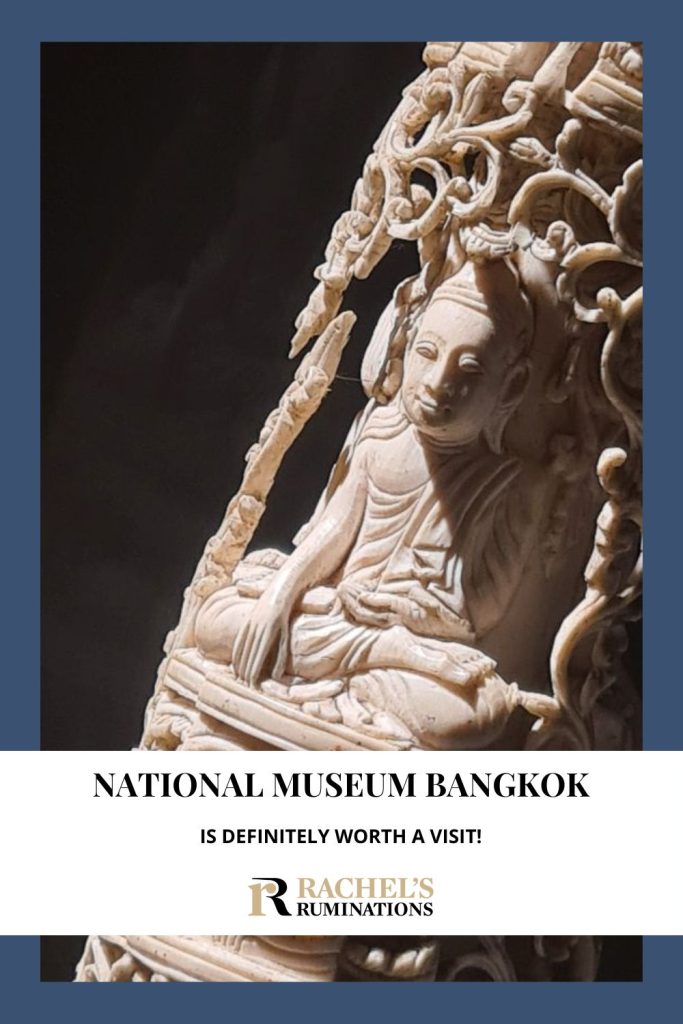
Note: I wrote this article with help from my husband, Albert. He visited by himself but hadn’t seen all of the galleries because it was closing time. He wanted to go back and thought I’d like it too, so I joined him for his second visit.
The museum dates to the 1880s in the reign of King Chulalongkorn (a.k.a. Rama V). Or rather, it was moved to its current location then from where the collection was kept within the Grand Palace. The new location was already a palace called Palace of the Front, built in 1782. It had several buildings, but it had been abandoned. Since then, a couple of additional halls have been added to house the collection.
Disclosure: This article contains affiliate links. If you click on one and make a purchase, I will receive a small commission. This will not affect your price.
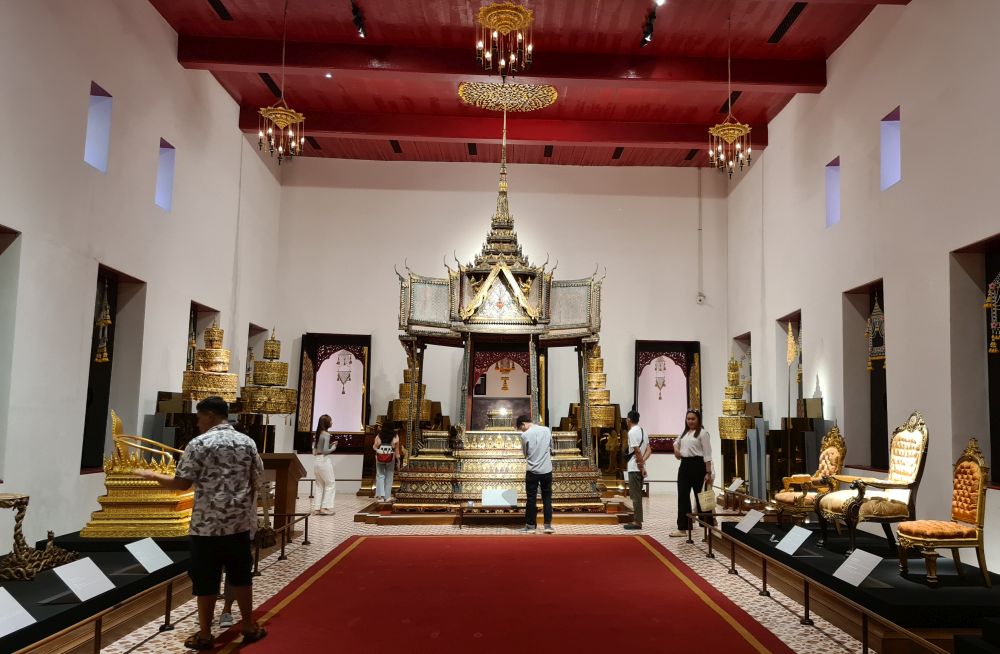
Palace architecture
The museum’s architecture itself is interesting, particularly the Buddhaisawan Chapel, which contains an important Buddha statue called Phra Buddha Sihing. The statue dates to the 13th century and is considered one of the holiest Buddha images in Thailand. The temple also has a painted mural from the early Bangkok period. There are plenty of other more interesting temples in Bangkok, but you might as well take a look while you’re here.
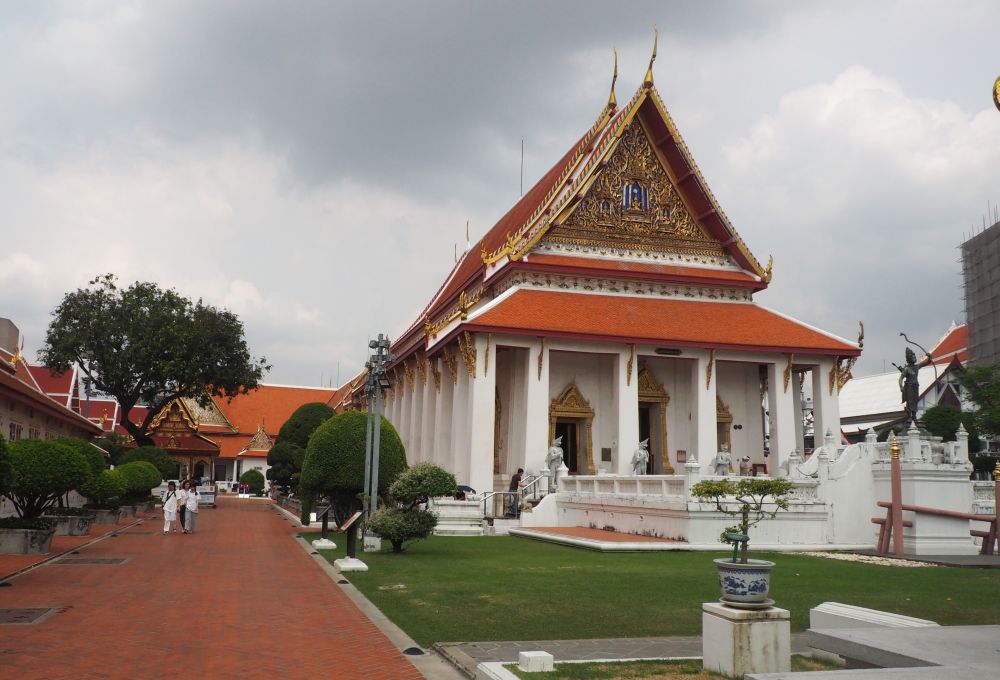
In addition to the temple, there are a number of pavilions – small buildings for the most part – that show aspects of traditional Thai architecture. There’s also a traditional teakwood house, an Audience Hall and the Issaret Rachanuson Building, a European-style house where King Pinklao lived.
If you still need to book your accommodations in Bangkok, take a look first at my article about the 10 different places I’ve stayed in Bangkok. Or use the map below:
Art and history
The bulk of the National Museum Bangkok is arranged around the history of Thailand, but that history is often expressed in terms of the works of art from each period. This interwoven view works well in this museum and, conveniently, the history is presented chronologically.
The South Wing
The South Wing covers prehistory until the 13th century CE, with a room or two on each period: prehistory, the Dvaravati period, the Lopburi period and the Srivijaya period. Some of the artifacts are displayed as they were found, but some have been restored to what they must have looked like. Yet the restorations make it clear which parts are original and which restored.
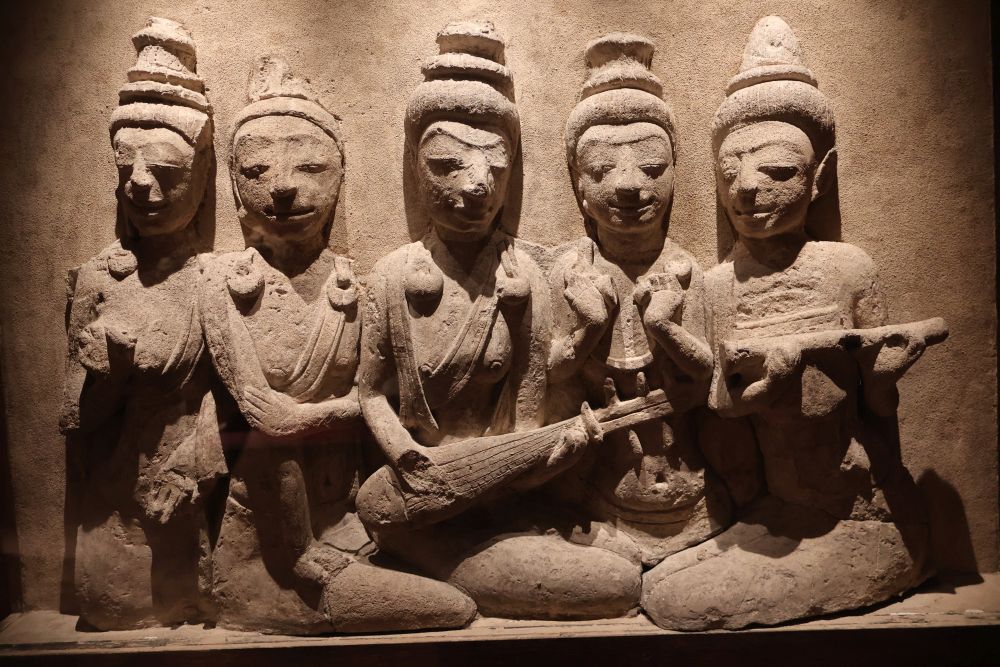
A useful display shows the timeline of Thailand, which is quite complicated with multiple kingdoms and conquests over the centuries. Yet what makes it clearer is that the display includes the timelines of other parts of the world, particularly Europe and the US. For those of us unfamiliar with Thai history, it lends perspective to be able to relate it to what is more familiar.
The North Wing
The North Wing continues the story, covering the Lanna, Sukhothai, Ayutthaya, Thonburi and Bangkok periods. The periods overlap, by the way, because Thailand (called Siam at the time) was not united as one kingdom until 1770.
- Lanna Kingdom: 13th-16th centuries in northern Thailand
- Sukhothai: 1238-1438 in north/central Thailand. Read about Sukhothai here.
- Ayutthaya: 1351-1767 north of Bangkok. Read about Ayutthaya on my UNESCO website.
- Thonburi: 1767-1782 on the west bank of the Chao Phraya river, an area now part of Bangkok.
- Bangkok: 1782 (when the capital moved across the river) to the present day.
I enjoyed the North Wing in particular because it helped me place in context some of what I’d already seen. I’d visited both Sukhothai and Ayutthaya, for example. These are both UNESCO sites with temple ruins, yet the artwork from the two periods is somewhat different. Seeing them in adjacent galleries at the museum made the similarities and differences clearer.
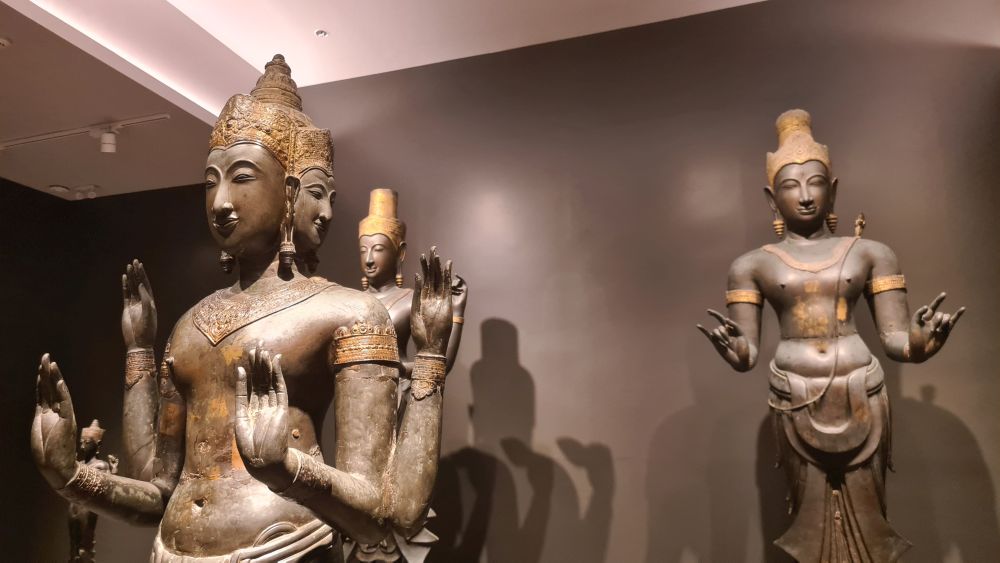
In the Viceroy Residential Complex – the largest building in the museum and the place where the viceroy once lived – the museum covers Thai traditional arts. This means lots of royalty-related artifacts. You’ll see royal vehicles, thrones, utensils, furniture, textiles, ceramics, weapons and much more. All of it is beautifully crafted: artworks in themselves. It gives a very clear idea of the wealth of the generations of royalty in Thailand.
Don’t miss the separate hall where the royal funeral chariots are parked. They’re incredibly ornate and still, I presume, in working order.
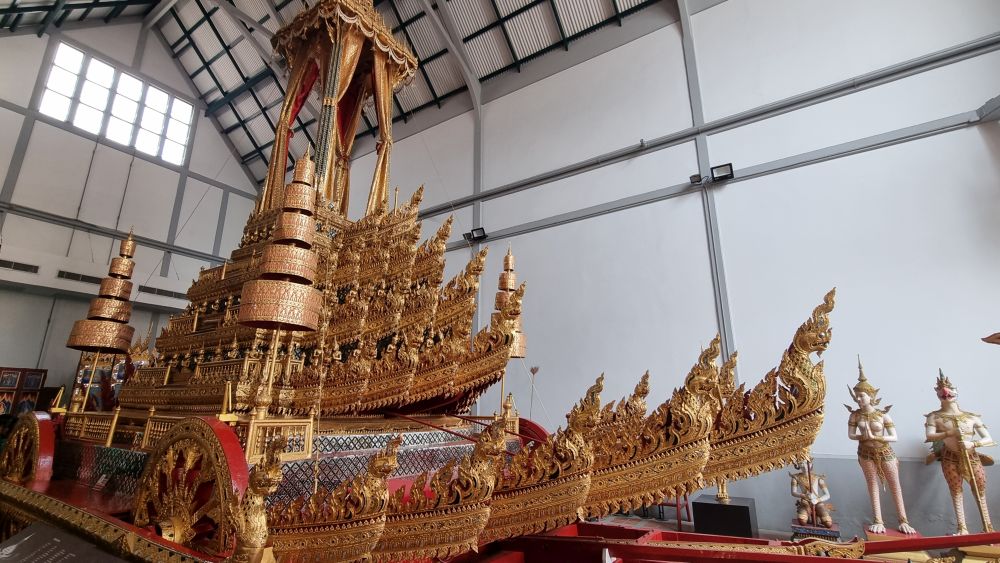
Tips for visiting the National Museum Bangkok
The halls of the Bangkok National Museum are large and airy and elegant – it was a royal palace originally, after all. The items on display are arranged with enough space around them and good lighting, and the explanatory signs are in both Thai and English. Take your time, especially in the traditional arts part of the museum, to look at the details. The thrones, for example, aren’t just thrones. They are covered in incredibly detailed artwork, worth closer inspection.
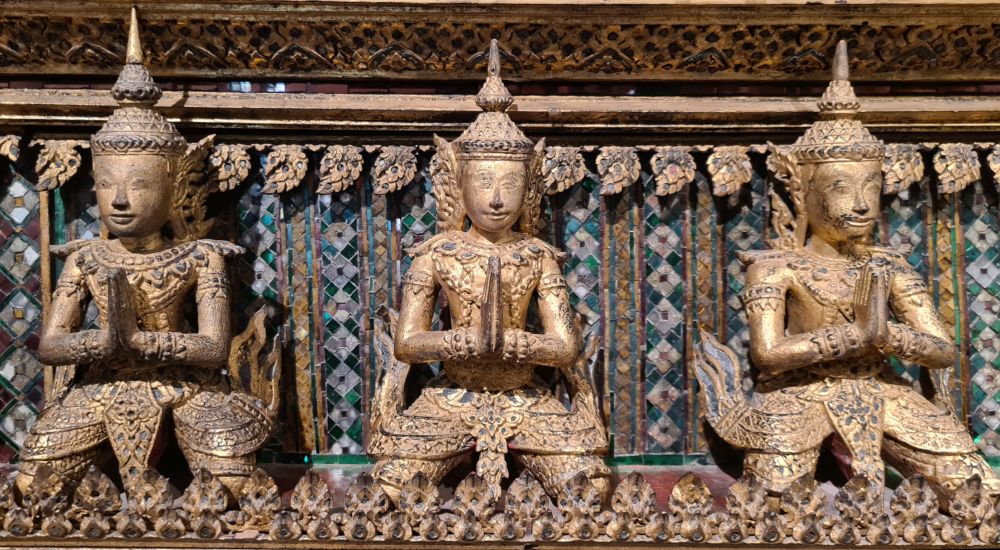
The museum is nice and cool inside, but to go from one building to the next you have to walk a little outside. We’d advise using sunscreen if you burn easily.
Although some travel guides state that the museum is free for students and people over the age of 60, this did not seem to be the case. Entrance fees, however, are not very high (200 Baht for foreigners).
If you want to avoid loud groups of high school students, you may want to consider a weekend for going to the museum. There were hordes of them when Albert visited on a Thursday, but none when we went back on a Sunday.
Plan at least two hours – more if you’re the type to want to read every explanatory sign.
Most of the museum seems to be wheelchair accessible, though there are a few rooms of the former palace that require climbing a rather narrow stairway.
National Museum Bangkok: Na Phrathat Rd, Phra Nakorn District, Bangkok 10200. Open Wednesday-Sunday 8:30-16:00.
My travel recommendations
Planning travel
- Skyscanner is where I always start my flight searches.
- Booking.com is the company I use most for finding accommodations. If you prefer, Expedia offers more or less the same.
- Discover Cars offers an easy way to compare prices from all of the major car-rental companies in one place.
- Use Viator or GetYourGuide to find walking tours, day tours, airport pickups, city cards, tickets and whatever else you need at your destination.
- Bookmundi is great when you’re looking for a longer tour of a few days to a few weeks, private or with a group, pretty much anywhere in the world. Lots of different tour companies list their tours here, so you can comparison shop.
- GetTransfer is the place to book your airport-to-hotel transfers (and vice-versa). It’s so reassuring to have this all set up and paid for ahead of time, rather than having to make decisions after a long, tiring flight!
- Buy a GoCity Pass when you’re planning to do a lot of sightseeing on a city trip. It can save you a lot on admissions to museums and other attractions in big cities like New York and Amsterdam.
- Ferryhopper is a convenient way to book ferries ahead of time. They cover ferry bookings in 33 different countries at last count.
Other travel-related items
- It’s really awkward to have to rely on WIFI when you travel overseas. I’ve tried several e-sim cards, and GigSky’s e-sim was the one that was easiest to activate and use. You buy it through their app and activate it when you need it. Use the code RACHEL10 to get a 10% discount!
- Another option I just recently tried for the first time is a portable wifi modem by WifiCandy. It supports up to 8 devices and you just carry it along in your pocket or bag! If you’re traveling with a family or group, it might end up cheaper to use than an e-sim. Use the code RACHELSRUMINATIONS for a 10% discount.
- I’m a fan of SCOTTeVEST’s jackets and vests because when I wear one, I don’t have to carry a handbag. I feel like all my stuff is safer when I travel because it’s in inside pockets close to my body.
- I use ExpressVPN on my phone and laptop when I travel. It keeps me safe from hackers when I use public or hotel wifi.


